At last, a holiday even though it was very short. We had been thinking of going to Galloway for some time and finally towards the end of August took the plunge to try to book something for early September. This turned out not to be easy as so many places were full, but we did find a cottage in Creetown for three nights and a bed and breakfast in Kippford for two nights.
Go here for a picture gallery
Threave Gardens
The journey north from Nidd Cottage was not particularly pleasant as the A66 was very busy and slow, but once we got on to the M6 it didn’t take long to get to our first stop, Threave Gardens just outside Castle Douglas. These gardens are the grounds of Threave House, a very typical Scottish baronial mansion designed in 1871.
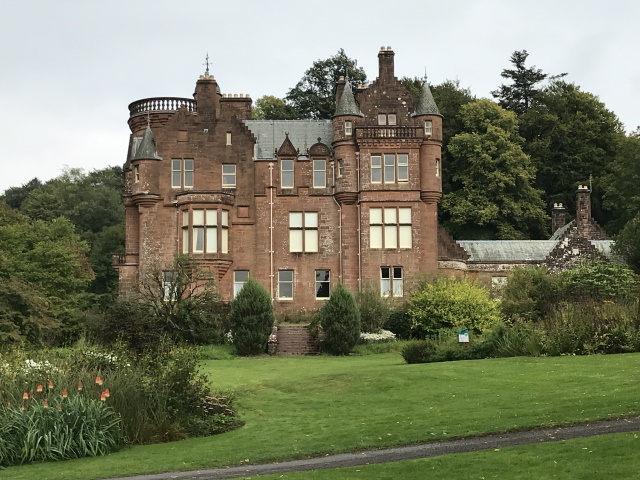
As part of the National Trust for Scotland, Threave’s wonderful garden has been created by students of the Trust’s School of Heritage Gardening. It covers a huge area.
We had time to do the walled garden plus part of the extensive grounds. I particularly liked this plant with green stripey leaves.
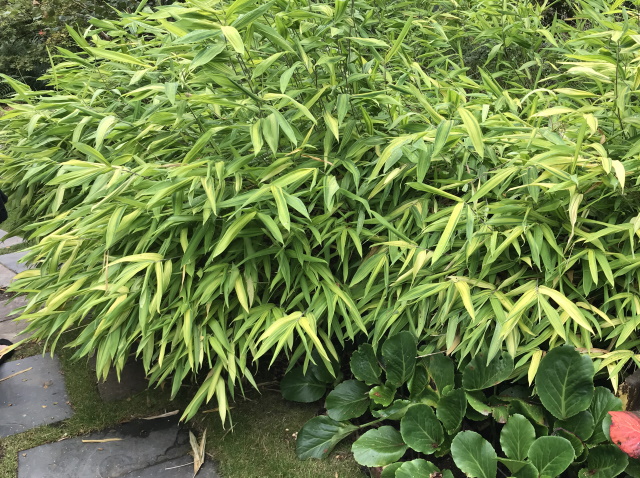
This site is not to be confused with Threave Castle, a couple of miles away which was still closed because of Covid.
Logan Botanic Garden
Our first full day dawned fine and sunny and stayed like this all day. It was definitely a time for the Mull of Galloway and some sights on the Rhins of Galloway peninsula on the way there.
Logan Botanic Garden is part of the Royal Botanic Garden Edinburgh (RBGE) and rightly claims to be “Scotland’s most exotic Garden”. It dates back to 1869 and has plants from all over the world. At the entrance we were greeted by a Galloway bull.
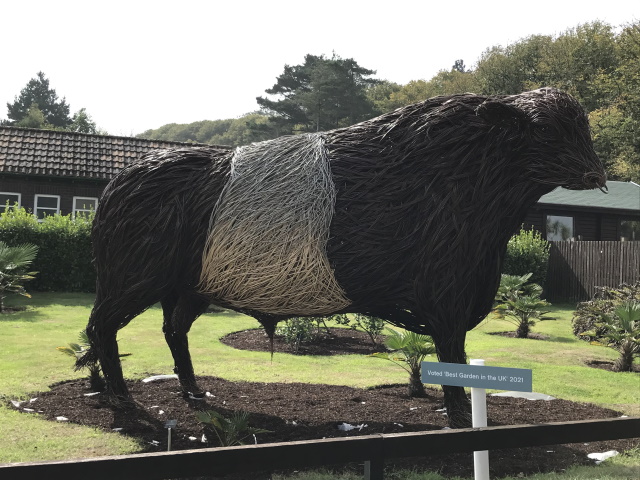
There are areas devoted to plants from Australia and New Zealand such as tree ferns and eucalyptus complete with a picture of a koala, also South America where I really liked Fascicularia bicolor, a hardy bromeliad from Chile.
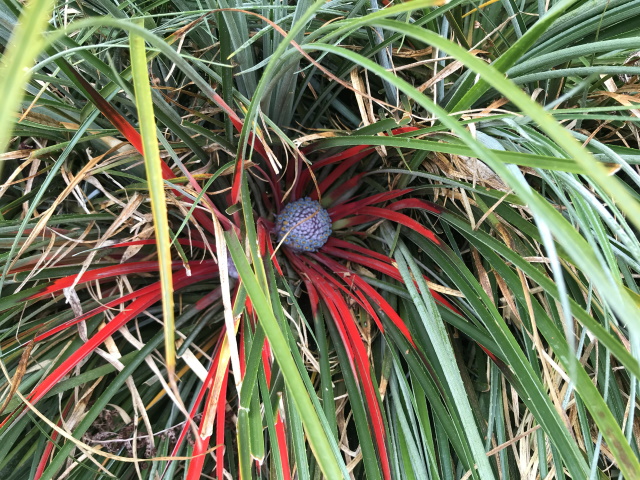
Other highlights were the peeling bark on the filo pastry tree from the Andes and the gunnera tunnel, where I had to bend double to get through.

There we also saw the Loganosaurus Rex.

For more information you can search the RBGE Catalogue of Living Collections plants online.
Ardwell Bay
It was time for lunch but the Botanic Garden was very busy. The guidebook recommended Ardwell Bay on the west coast. You have to drive on a gravel road (not too different from the track to Nidd Cottage) to get there but it’s well worth the effort to see a beautiful sandy beach which was almost deserted. It was the ideal place for a picnic. After a short walk on the cliffs to the side of the beach we walked the length of the beach and back.
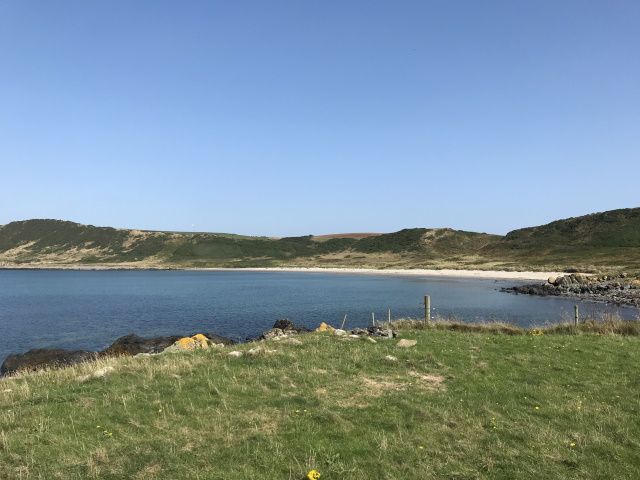
Mull of Galloway
Of course we had to drive to the southern tip of the Rhins peninsula. The Mull of Galloway is the southernmost point in Scotland. There’s a nice short circular walk around the lighthouse and the brave can go down some cliffside steps to the foghorn. It was a bit hazy in the sunshine, but the views were still excellent.
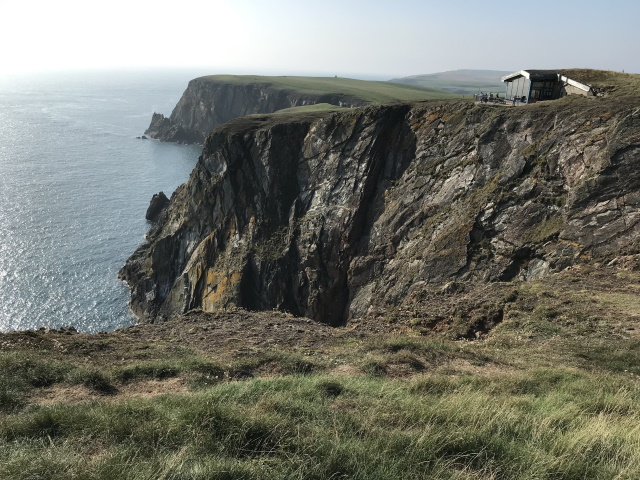
The lighthouse and the RSPB exhibit were closed but the cafe was open and did not baulk at serving us tea five minutes before closing time as often happens in England (and annoys us intensely after experiencing the willingness to serve you a meal at closing time in the USA).
The obligatory signpost indicated the distance to Senegal where the Mull of Galloway gannets spend the winter.
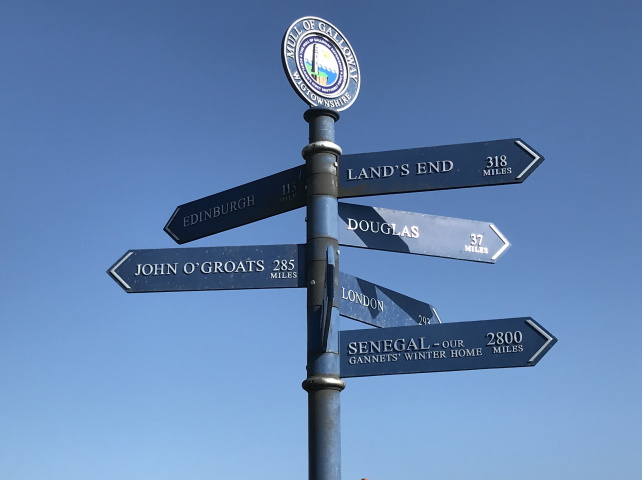
Torhouse Stone Circle and Sorbie Tower
The next day was also fine and sunny. This time we headed for the peninsula known as the Machars and the Isle of Whithorn at its southern tip. Our first stop was the Torhouse Stone Circle a Bronze Age monument of nineteen boulders fenced off in the corner of a field of cows. We weren’t the only people there but the other sightseers seemed more interested in the cows.

Sorbie Tower, now in ruins, was the ancient seat of the Clan Hannay. An enterprising member of this clan is attempting to raise funds renovate it and turn it into a venue for events. It’s quite a dramatic building but he has a long way to go to achieve his aim.
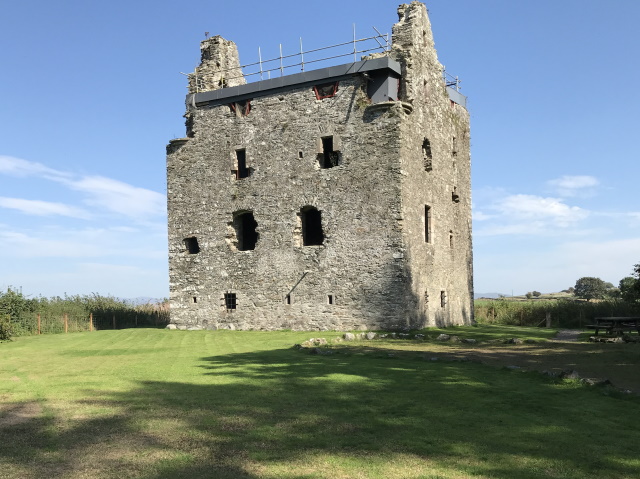
Whithorn
It is said that Christianity was first brought to Scotland in the 4th century AD when St Ninian established a religious community in Whithorn, but the earliest reference to this is in Bede’s Ecclesiastical History completed in about 731AD. We visited Whithorn Priory, now in ruins, and a small museum where an enthusiastic volunteer guide explained the origins and significance of various stone celtic crosses at great length. The town itself is pleasant with a wide main street. It was very quiet with just a few tourists in the early afternoon.

Isle of Whithorn
There were more signs of life with plenty of tourists at the Isle of Whithorn which is not an island but a village on the coast about four miles south of Whithorn. Here we visited St Ninian’s Chapel, a small 13thc building now in ruins and set right by the sea.
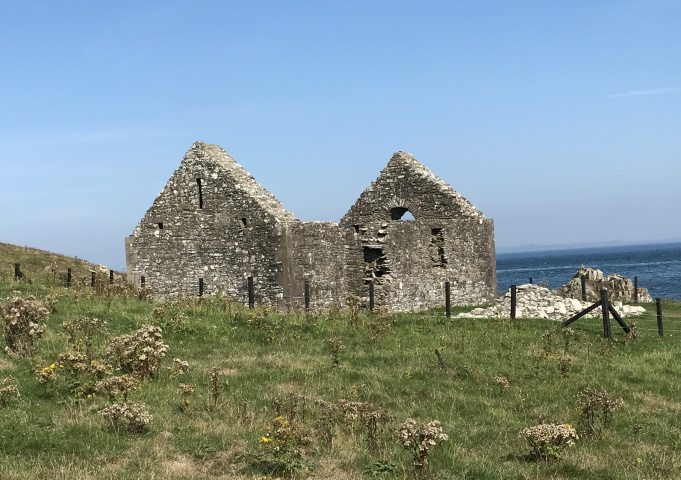
St Ninian’s Cave, a good walk away, also sounds interesting but we will have to wait for next time as it was closed for conservation works. Instead we had a nice walk along the opposite side of the river from the Isle of Whithorn before detouring via PortPatrick on the west coast and rushing back to our cottage to watch Emma Raducanu’s quarter-final at the US Open Tennis.
Wigtown
The rain forecast for the next day turned out to be mostly drizzle, but we had already reserved some of this day for Wigtown which describes itself as “Scotland’s Book Town”. It is indeed a mini version of Hay-on-Wye. We spent most time in the largest bookshop where an apparently very docile black and white cat picked a fight with every passing dog.
On the one shelf of Yorkshire books we found one of the only two hundred original copies of Joseph Lucas’ Historical Genealogy of the family of Bayne of Nidderdale published in 1896. This family lived at Thwaite House, a mile away from Nidd Cottage, in the 1600s. There is a facsimile of some of this volume online, but it is incomplete. We decided to treat ourselves to an early Christmas present and bought the book.
Creetown Gem Museum
Creetown Gem Rock Museum is definitely worth a visit. Crowded into a good many display cases is a huge collection of mineral and gem rock samples all carefully labelled. There is also a “Crystal Cave” where some rocks take on a remarkable range of colours in fluorescent light. The museum is operated by a local couple and there’s also a sizeable cafe and shop.
Cairnsmore and the Big Water of Fleet Viaduct
We drove up over a narrow road into the Cairnsmore of Fleet National Nature Reserve. It was raining but Martin walked up on to the Big Water of Fleet railway viaduct which, after Dr Beeching took his axe in 1965, became a tourist attraction. This 20-arch structure once took rail passengers to Stranraer and the ferry to Ireland.
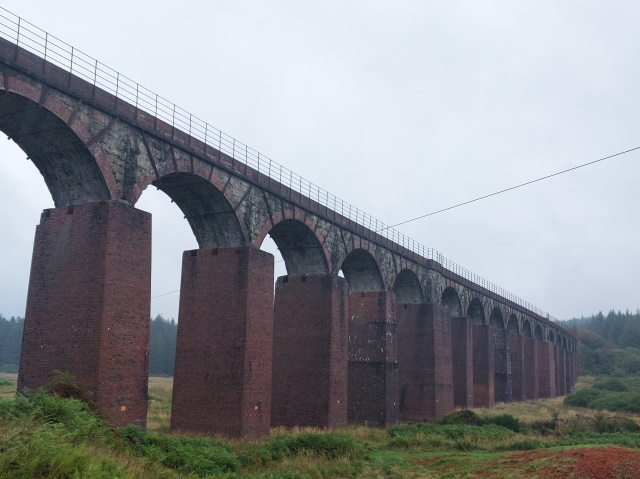
Kippford and Rockcliffe
After visiting the small nature museum we drove down to Kirkcudbright where the weather was better, and then towards Dalbeattie stopping at Dundrennan Abbey which was closed but clearly visible through the gate.
Our room in Kippford looked out over the water, or rather mud flats as the tide was out. The light at dusk was amazing.

On our full day there we decided to walk to the next village Rockcliffe. On the edge of Kippford we passed some large houses up on rocky cliffs. Some of them had large wooden sculptures of animals on the cliff side.
Just past the end of Kippford at low tide you can walk across a causeway and sandy mud flats to Rough Island. Martin couldn’t resist and I decided to follow. It took about twelve minutes to get there. We came back quickly as the tide appeared to be coming in.

We had planned to find lunch in a pub at Rockcliffe but the only food in sight was an ice cream van serving cones with no covid precautions. When you order an ice cream cone in the USA the server picks it up in a paper napkin and so never handles the cone at all. Why can’t some British ice cream sellers do the same instead of handling food and money with the same hands?
Help was at hand for the hungry. Nearby, round the corner from the sea front was a small cafe in the garden of a nice house where a pleasant lady wearing a mask was doing a great trade in coffee and cake.
After lunch Martin walked further south along the coast while I watched the tide come in very rapidly until the water was lapping just a few yards from the road. People sitting there were entertained when a man came out of a house behind us pulling an inflatable dinghy on a trolley. He went back to bring an outboard motor on another trolley, spent a long time assembling his boat to find that the motor was dodgy. Eventually he got it going, attempted one circuit of the bay and had to resort to using oars.
We took the upper Jubilee route back to Kippford taking a detour to climb a mound and admire the view including Rough Island now surrounded by water.
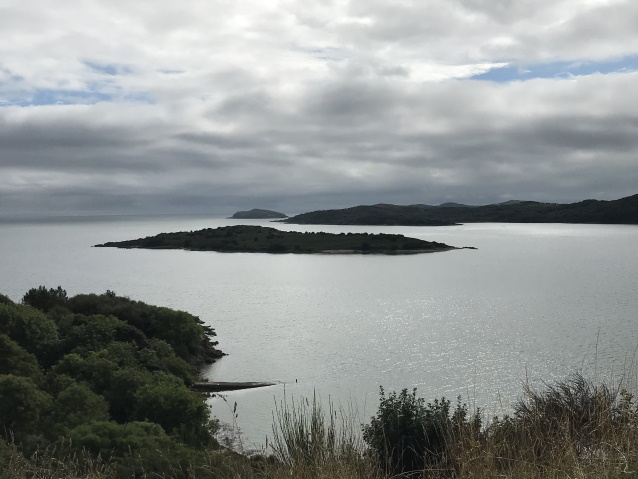
A short drive from Kippford took us to Sandyhills where there is a good beach where we ate a very late picnic lunch. There is a large caravan park there and notices about free parking for only thirty minutes. After that you have to pay £4.50. This was the only unfriendly place we encountered.
Orchardton Tower and Dundrennan Abbey
On our last day we retraced our steps towards Kirkcudbright taking short detours to Orchardton Tower, a circular tower from the mid-1400s, and Balcary Bay where there is a nice walk. This time Dundrennan Abbey was open. The architecture is quite dramatic.

The abbey was built by the Cistercians in the late 12th century and had links to Rievaulx in Yorkshire. Mary Queen of Scots spent her last night in Scotland there.
Kirkcudbright
At Kirkcudbright we found that the main tourist attraction MacLellan’s Castle was closed for renovations. So we grabbed a sandwich from the Co-op and ate it by the river.
We did manage to get into Broughton House which is operated by the National Trust for Scotland. The house belonged to E A Hornel a well-known artist and plenty of his paintings were on display. The predominant colour was pink and many featured females in flamboyant dresses. Hornel travelled widely including spending time in Japan which influenced the design of the lovely gardens at the back of the house.
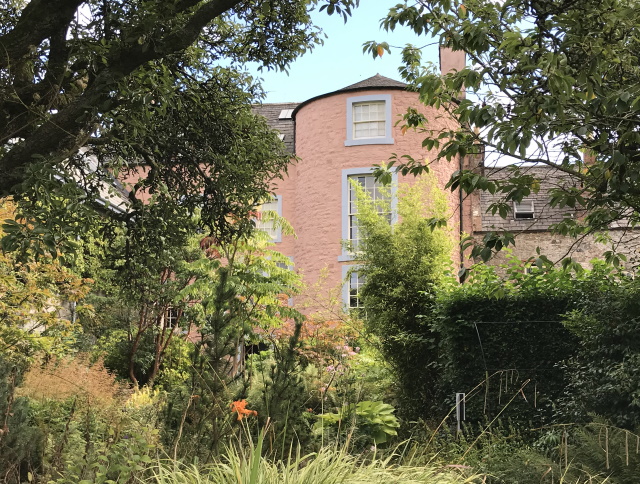
Getting home
We stopped at Sainsburys in Carlisle and Penrith and seemed to be almost the only people wearing masks and so we didn’t stay long. After the stop and start on the A66 going up to Scotland we took a different route home cutting across from Tebay to near Kirkby Stephen and then to Garsdale Head and down Wharfedale. It was much better.
Practicalities
We stayed the first three nights in The Granite House, a delightful and well-equipped small cottage in Harbour Street, Creetown four miles south of Newton Stewart. Harbour Street no longer leads to a harbour but is still attractive with granite houses.
For our last two nights we settled on the Mariner Hotel in Kippford, a small village on the estuary of the River Urr. The room was fine with good wifi and had an excellent view over the water (and low tide). The bathroom was rather basic and but very clean. The hotel manager apologised for the service telling us they were short of staff as was every other hotel in the area. We had dinner there on the first night from a menu cut short by the staffing problems. Breakfast was excellent. On the second night we got a rather good Chinese takeaway from the Rose Garden (in the Ship Inn) in Dalbeattie.
We got much of our information on what to see and where to go from the excellent Bradt Slow Travel Guide Dumfries and Galloway, 2020.
Impressions of Scotland
It was five years since we had been to Scotland. We were as much impressed this time as before. The weather was mostly very kind to us and the people were very friendly and helpful. We didn’t have to pay for parking anywhere, even in the towns, and there was no litter. Mask-wearing is required in any indoor environment such as hotels, restaurants, museums etc and people stuck to this rule. National Trust and English Heritage members get free entry to sites run by the National Trust for Scotland and Historical Environment Scotland respectively. Some sites were closed because of covid.
We only saw a few beaches of which Ardwell was by far the best. The tide does go out a very long way in the Solway Firth leaving mostly mud flats. The landscape in Galloway is mostly rolling hills and farmland. There were far more farm animals than you normally see in England, mostly black and white cows and some sheep. We only saw only two small herds of belted Galloway cows – there are far more of them in the fields below our house in Upper Nidderdale.
Picture gallery: A Short Trip to Galloway September 2021
Click to enlarge

Threave House 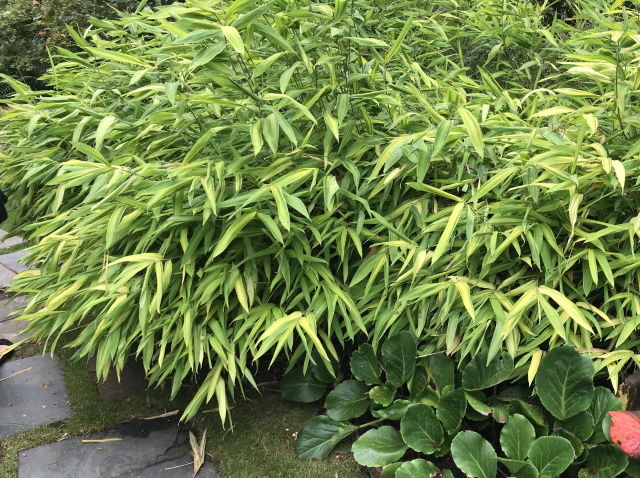
A favourite in Threave Gardens 
Interesting bark, Threave Gardens 
Entrance to Logan Botanic Garden 
Gunnera at Logan Botanic Garden 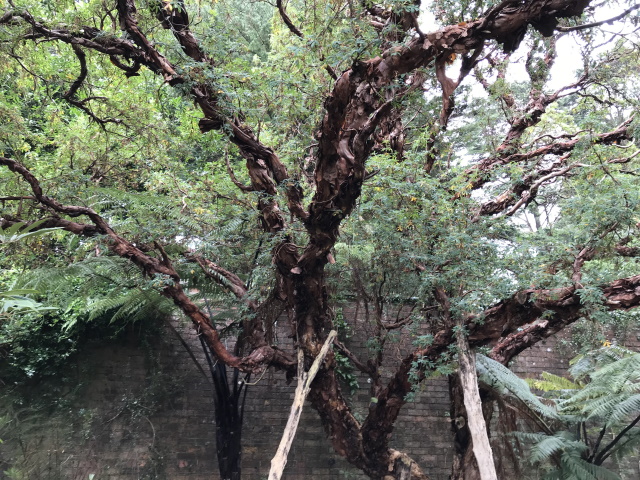
Filo pastry tree, Logan Botanic Garden 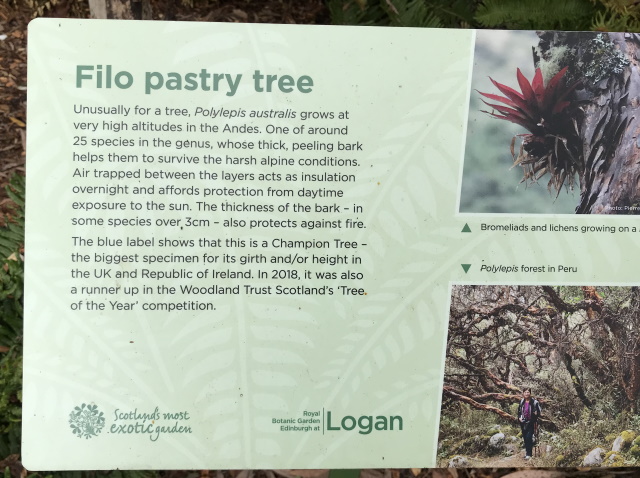
Champion filo pastry tree, Logan Botanic Garden 
Loganosaurus Rex, Logan Botanic Garden 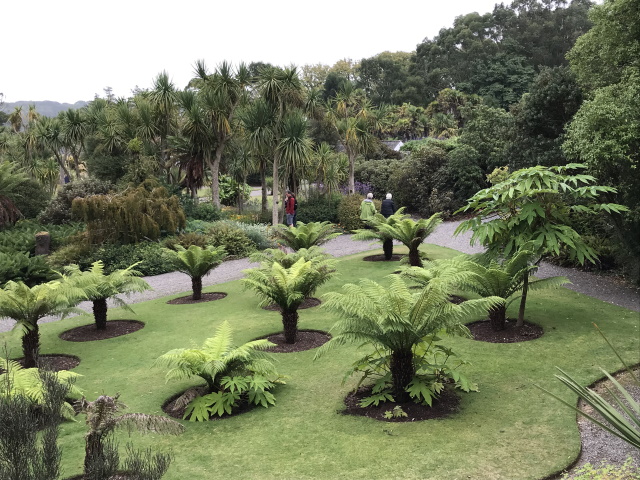
Tree ferns, Logan Botanic Garden 
Gunnera tunnel, Logan Botanic Garden 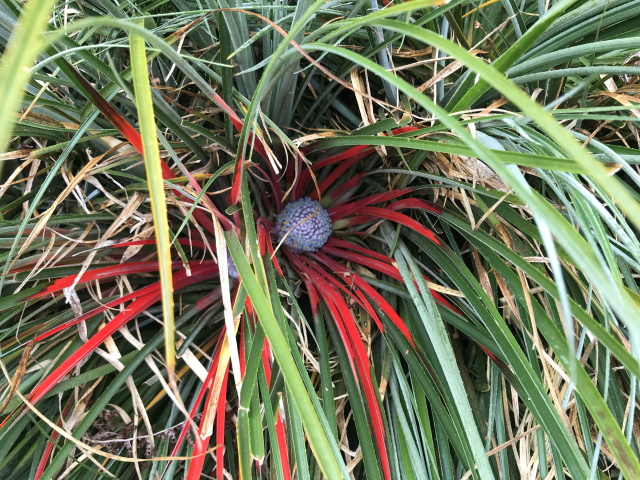
Fascicularia bicolor, Logan Botanic Garden 
Ardwell Bay 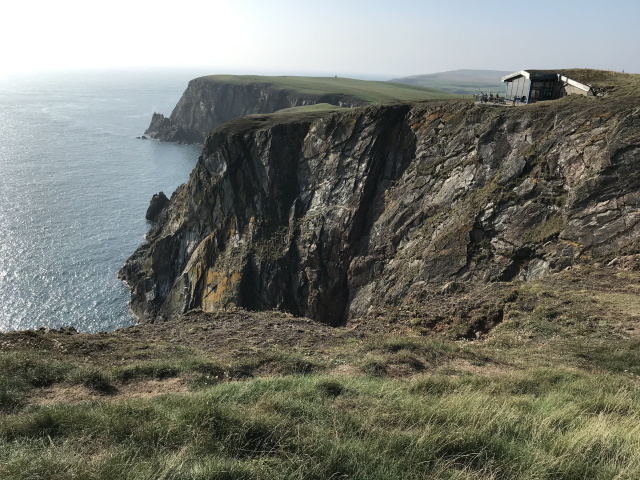
View from the Mull of Galloway 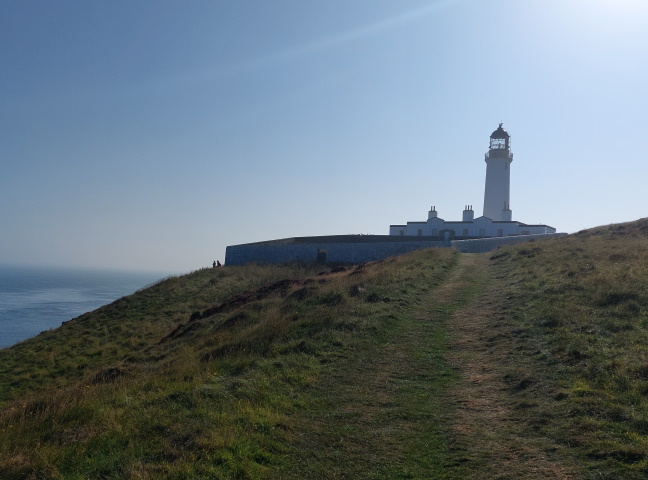
Mull of Galloway Lighthouse 
Mull of Galloway Lighthouse 
Signpost at the Mull of Galloway 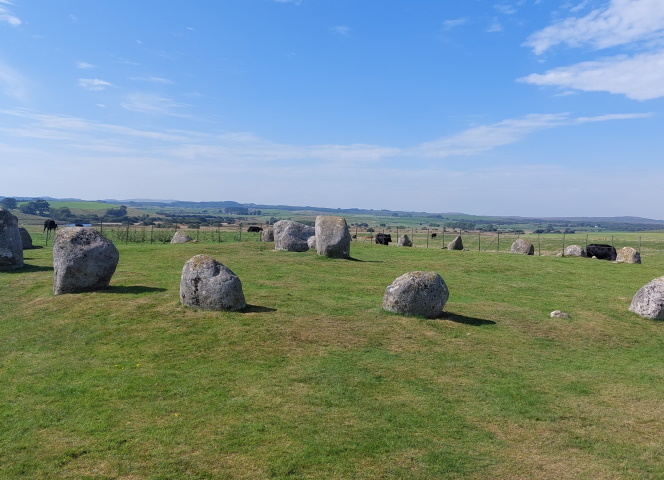
Torhouse Stone Circle 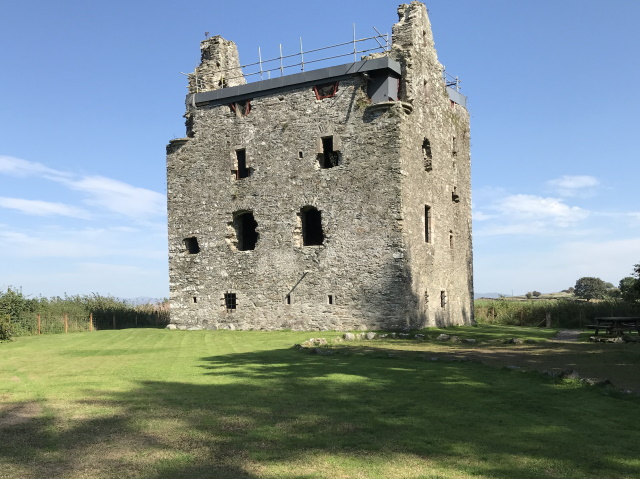
Sorbie Tower 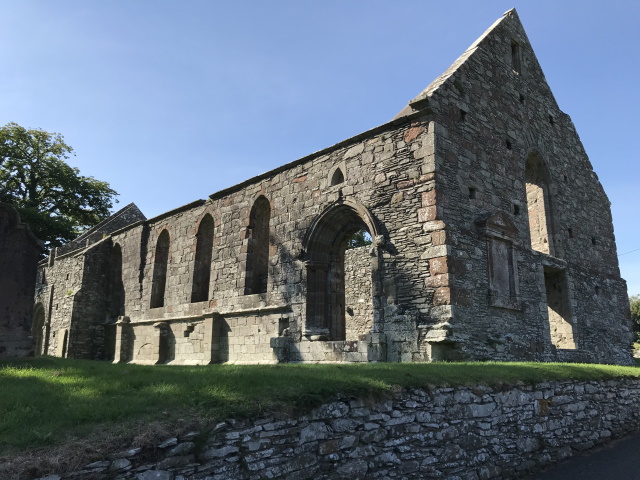
Whithorn Priory 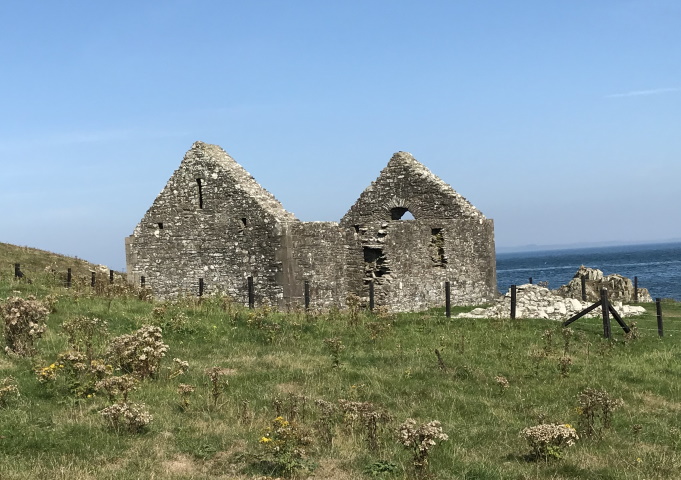
St Ninian’s Chapel, Isle of Whithorn 
Inside St Ninian’s Chapel 
Isle of Whithorn 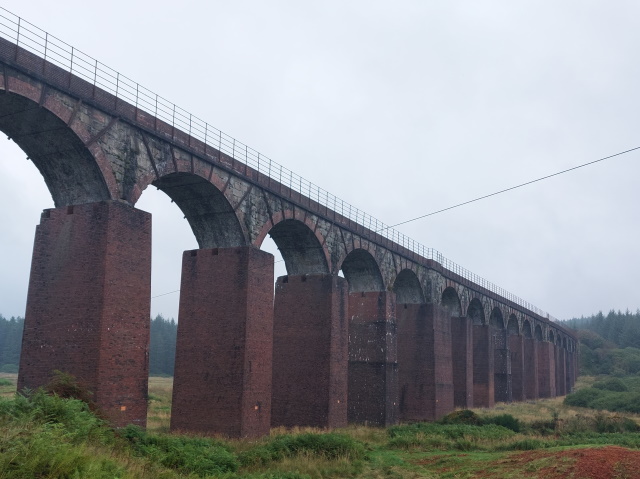
Big Water of Fleet Viaduct 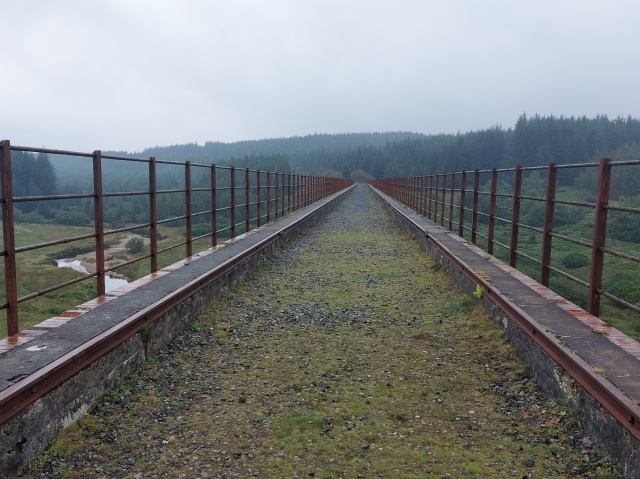
Big Water of Fleet Viaduct 
Looking down from the viaduct 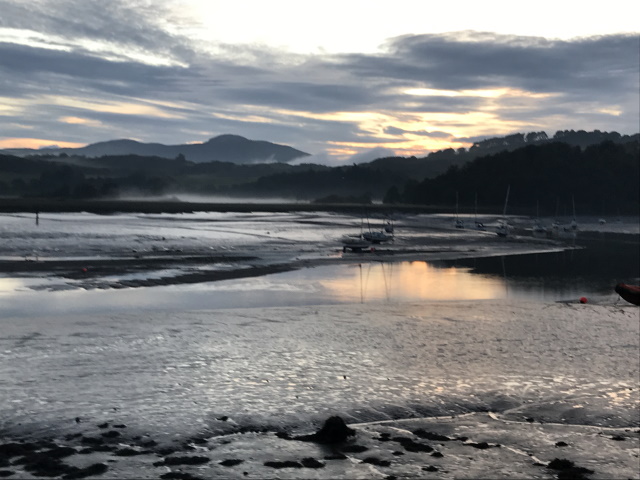
Dusk at Kippford 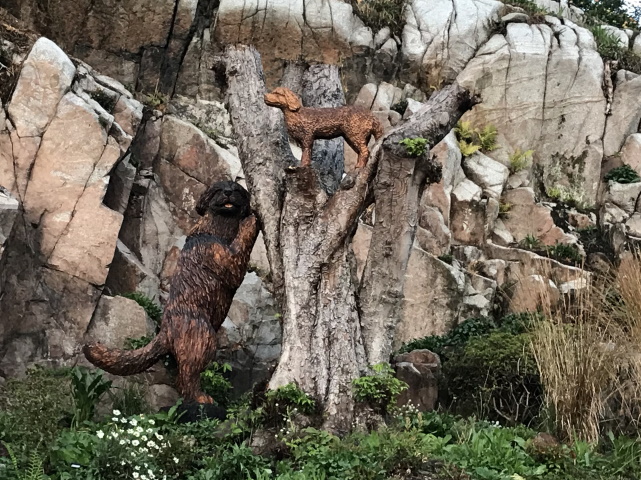
Cliffside garden art at Kippford 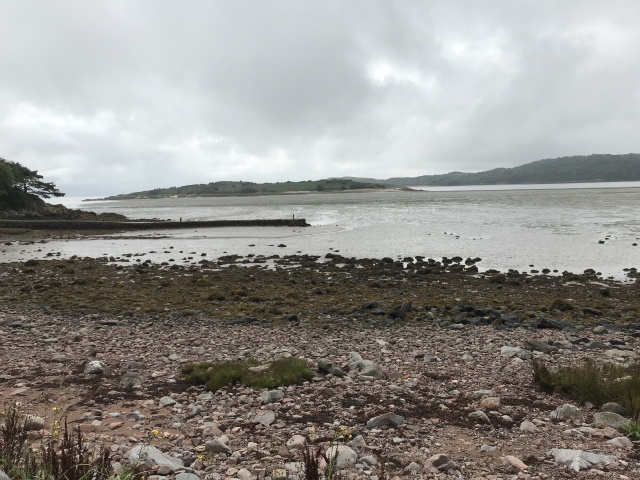
Rough Island – should we walk out there? 
Arriving in Rough Island 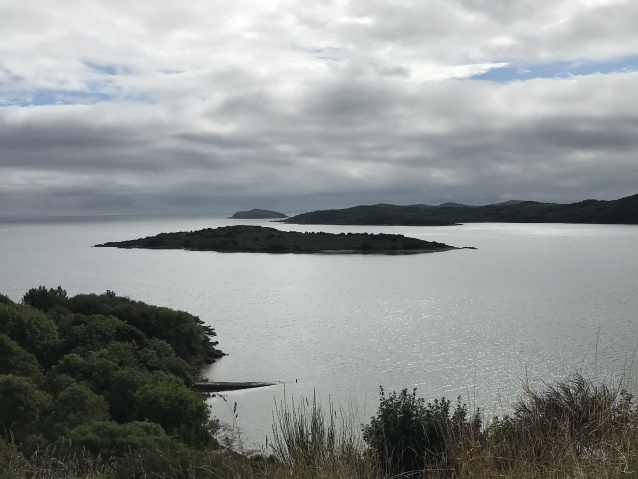
Rough Island at high tide 
Orchardton Tower 
Balcary Bay 
Dundrennan Abbey 
Dundrennan Abbey 
MacLellan Castle, Kirkcudbright 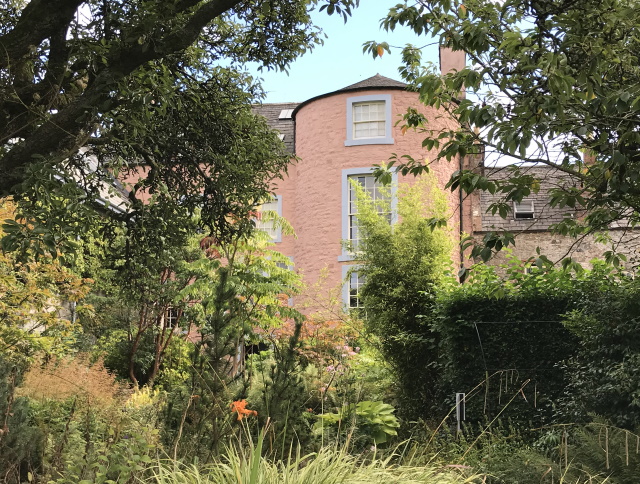
Broughton House, Kirkcudbright
An area of Scotland we’ve never visited. It looks fantastic. Brilliant photography too!
LikeLiked by 1 person